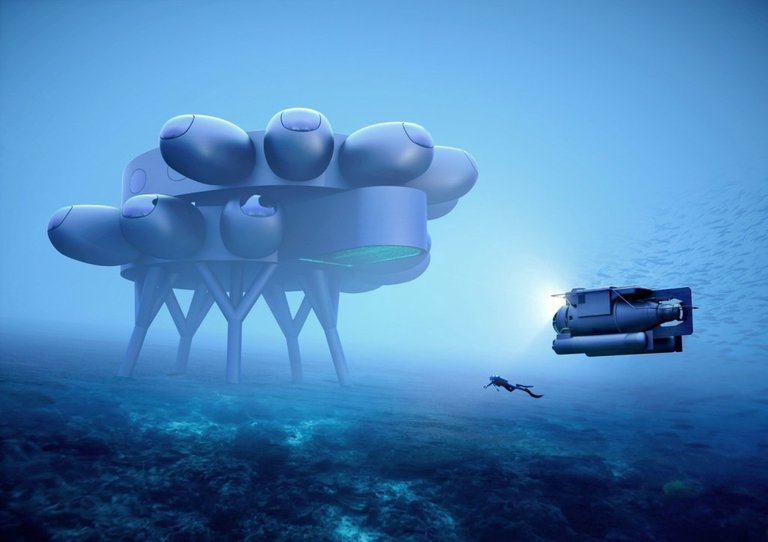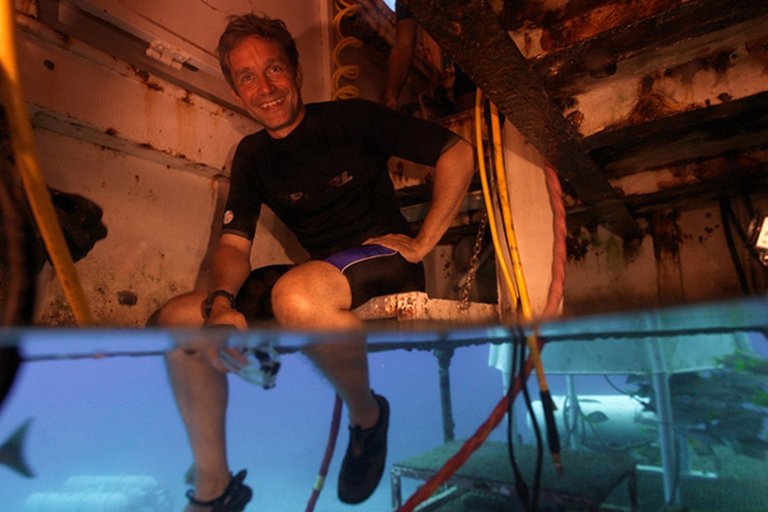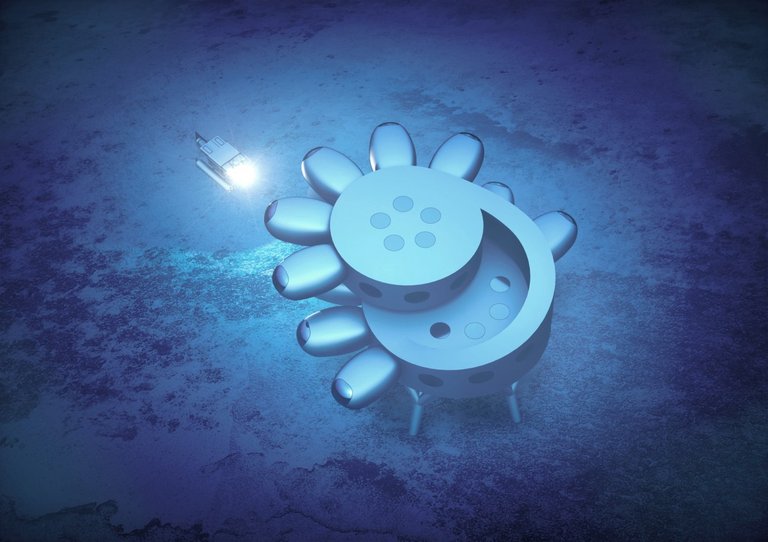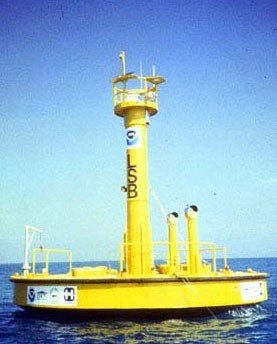Proteus: the ISS of the Deep Sea
We’re living in an interesting time in which China, Russia and the US are preparing to build bases on the Moon. But while space race 2.0 grabs headlines and the public’s attention, progress is also being made on the settlement of the blue frontier.
Jacques Cousteau, grandson of famed undersea explorer and filmmaker turned conservationist Jacques Cousteau, is fundraising for a state of the art submerged research base. Back in June of 2014, he spent 31 days living and working beneath the waves at Aquarius Reef Base, the world’s last open ocean underwater research station.
In doing so, Fabien broke his grandfather’s record by one day, although the all time world record for time spent in an underwater habitat is actually 80 days, set by Rick Prestley in Marinelab. Many sources incorrectly report that the world record is 73 days, set by Bruce Cantrell and Jessica Fain aboard the Jules Lodge, formerly La Chalupa.
At any rate it must’ve given Fabien the aquanaut itch, having such a tantalizingly brief taste of the life aquatic, because his brainchild habitat Proteus will be the largest fixed undersea facility ever built (if indeed it is built) at about ten times the interior volume of the Aquarius Reef Base.
It is planned to have a hydroponic garden, a medical bay, facilities for editing footage, expandability via additional modules, 11 sleeping pods, a kitchen, bathroom with hot showers and various other amenities. It will be the third habitat, after Hydrolab and Conshelf 2, to be able to receive and deploy a submersible.
However, Conshelf 2’s submersible hangar was separated from Starship House where the crew lived, worked and slept. Hydrolab could receive a submersible only via a docking collar. Proteus will be the first habitat with an integrated moon pool, which makes it possible to perform many types of maintenance on a submersible at depth.
This includes recharging, resupply with CO2 absorbant, external repairs, component replacement (lights, props, control surfaces) and so on. This will make Proteus invaluable as a platform from which to conduct submersible expeditions with no need for crewed surface support ships, which are often imperiled by violent surface weather.
As if that weren’t enough, should Proteus be funded and built, Fabien intends a second habitat named Triton. A sister habitat to Proteus, which will be emplaced at a depth of just 60 feet, Triton will be emplaced ten times deeper at 600 feet. This puts it in a very small, exclusive club, as the only other habitat ever to reach that depth was the ill-fated Sealab III.
This would represent many milestones for manned undersea activity which were long ago passed in space: First modular undersea station to be expanded with additional modules in situ (Helgoland’s expansion module was fitted in a shipyard) and the first time aquanauts will be able to travel between two undersea outposts via submersible without ever getting wet.
This seems like a trivial novelty, something for the Guinness Book of Records except that it will make Proteus potentially accessible by marine biologists with physical disabilities that prevent them from scuba diving.
Sister habitats at such different vertical positions in the water column is another on the long list of firsts that this project represents, though Triton may see less frequent use as it will require costlier heliox breathing gas and a system for recapturing, scrubbing and reusing it whereas Proteus is shallow enough to use ordinary atmospheric air constantly pumped down from a LSB (life support buoy) on the surface, like the one Aquarius Reef Base uses.
While Proteus is intended to run primarily on renewable energy from solar panels and a wind turbine built into its LSB, it is likely to have diesel generators as backup, as per Aquarius Reef Base’s LSB. It is likely also to borrow other safety solutions from Aquarius, like a multi-day air supply stored in a cluster of enormous pressurized cylinders sitting outside on the seabed.
What the future holds for this daring, potentially history making project remains uncertain. Certainly it’s a missed opportunity that we’ve not committed the same resources to the exploration and settlement of our oceans as we have to space, but with the way things are going, that may soon change.






HTTP is in use instead of HTTPS and no protocol redirection is in place. Be careful and do not enter sensitive information in that website as your data won't be encrypted.
It's also a good habit to always hover links before clicking them in order to see the actual link in the bottom-left corner of your browser.
This auto-reply is throttled 1/20 to reduce spam but if it still bothers you reply "OFF HTTP". Or reply REVIEW for manual review and whitelisting.